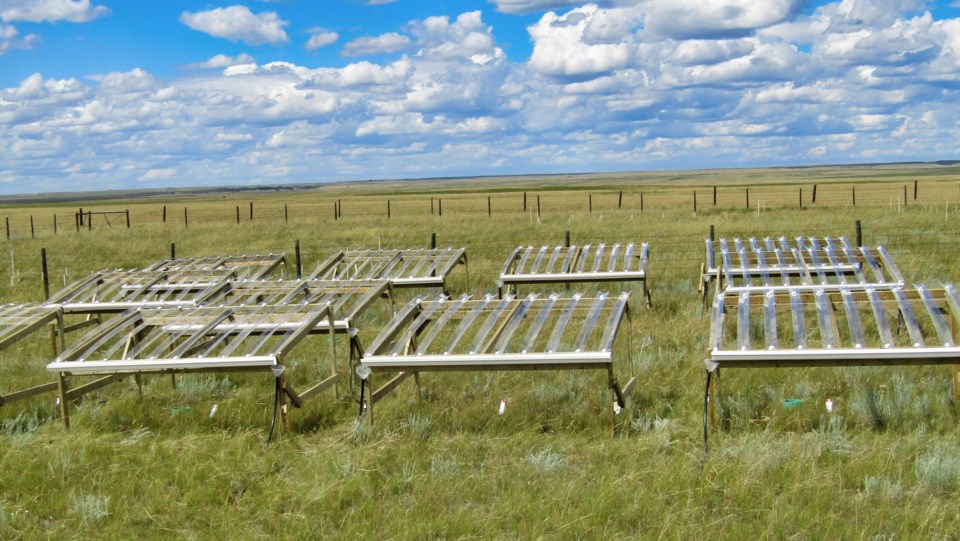The principle is fairly intuitive for most people; If you take away water, you're going to have less plant growth. But for years the effect of extreme, short term-drought on grasslands has been underestimated, according to an international study.
Researchers recreated abnormally intense drought conditions on plains and shrublands at sites in Asia, Africa, Europe, North America, South America, and Australia, recording a 60 per cent loss of plant growth in the experimental dry zones compared to more regularly occurring drought periods.
"We created these extreme droughts, which is a one-in-100 year event. Because it's one-in-100 years, we don't get the chance to study those naturally, very often," said Cameron Carlyle, associate professor of rangeland ecology in the Department of Agricultural, Food, and Nutritional Science at the University of Alberta, and one of 170 researchers involved in the study.
"What we showed was that that extreme drought, that one in 100 year event, was much more severe than the typical run of the mill droughts that we see regularly."
Though normally droughts of this magnitude have only a one per cent chance of occurring in a given area, intensifying climate change caused by the continued burning of fossil fuels is making such extreme weather events more common. Because the loss of plant growth recorded in this global drought study was substantially greater than previously reported losses, the total impacts of projected increases in drought severity have in turn been "substantially underestimated," the researchers concluded.
Part of the reason these costs have been underestimated is that past research wasn't coordinated, and techniques varied from study to study, making comparison difficult. By repeating the exact same experiment at 100 different sites, scientists can now better understand the regional impacts and disparities of intense, short-term drought.
"We've looked at drought in the past, but the way every researcher did those types of studies was different. And so it made it very difficult to get a general understanding of what was happening. Because we weren't confident whether or not differences were the results of the methodology or something else," Carlyle said.
"We're still analyzing the things coming out of this study. And because of the consistent methodology, we should be able to learn a lot more about what controls plant responses to drought."
One observation researchers are still trying to make sense of is why the same extreme drought conditions had varying effects on vegetation at different sites. The effects likely depend on a host of factors, such as soil type, which crops are planted, and how they're managed, Carlyle said. Understanding why some regions fared worse than others could help ranchers and farmers in Alberta prepare for potentially disastrous weather events.
"There's a great deal of interest, especially among farmers and ranchers, in drought," Carlyle said, adding that many parts of the province are now entering the third or fourth consecutive year of drought. "And I think there's increasing interest and concern about how to manage our agricultural systems with these recurring and frequent droughts."



